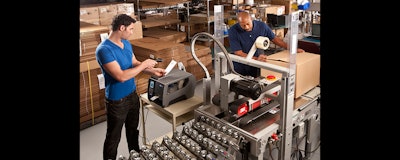
While you may not immediately think of printers as a vital productivity-enhancing tool for assembly and manufacturing industries, reframing this concept will reveal the hidden costs incurred when production contends with frequent printing problems: wasted time, squandered materials, documentation errors, disruptions to the office workflow, and unnecessary IT or help desk assistance.
Printers boost manufacturing productivity, but only when you have the right printer for the task—one that uses the best technology for the application, is easy to operate, clean and maintain, and has the features needed to automate many manual functions. Many production processes involve creating labels, work orders, inventory logs, bills-of-material and job tickets. When this necessary production documentation is handwritten, errors inevitably appear when numbers or instructions are transcribed from one document to another.
A dedicated printer for office and plant floor printing will streamline the manufacturing process and provide multiple benefits:
No. 1 — Seamless integration with enterprise-wide business systems, connecting manufacturing management with production, inventory, and outbound logistics
No. 2 — Barcode scanning and printing will add built-in information to labels - recording each production process; your company gains improved product traceability and production visibility
No. 3 — Dedicated printers eliminate wasted time walking to distant printers; 'just-in-time' printing at the point of production reduces the likelihood of order mix-ups
No. 4 — Removal of valuable labor time (and human errors) when documentation is sent directly from business systems to the production line
No. 5 — Reduction in part mislabeling with on-demand, pre-printed labels at the point of use; a more efficient system compared to mass printing labels prior to production runs
No. 6 — Quality and efficiency are promoted, while traditional, yet inefficient methods that add workflow burden and additional costs, are demoted
Wendy Stanley is Marketing Director for Radley Corporation, a company that specializes in EDI, WMS and MES software solutions for manufacturers.























